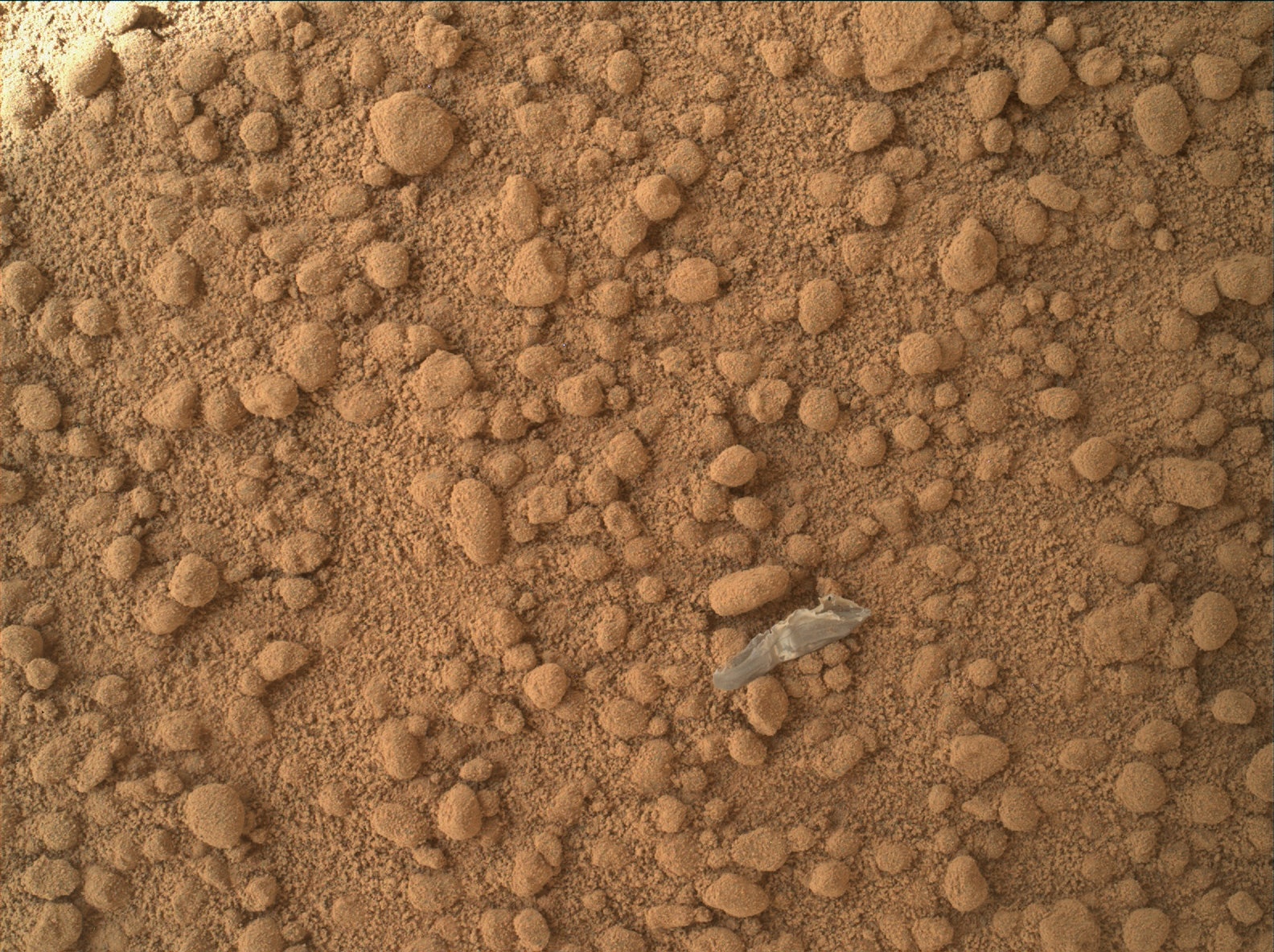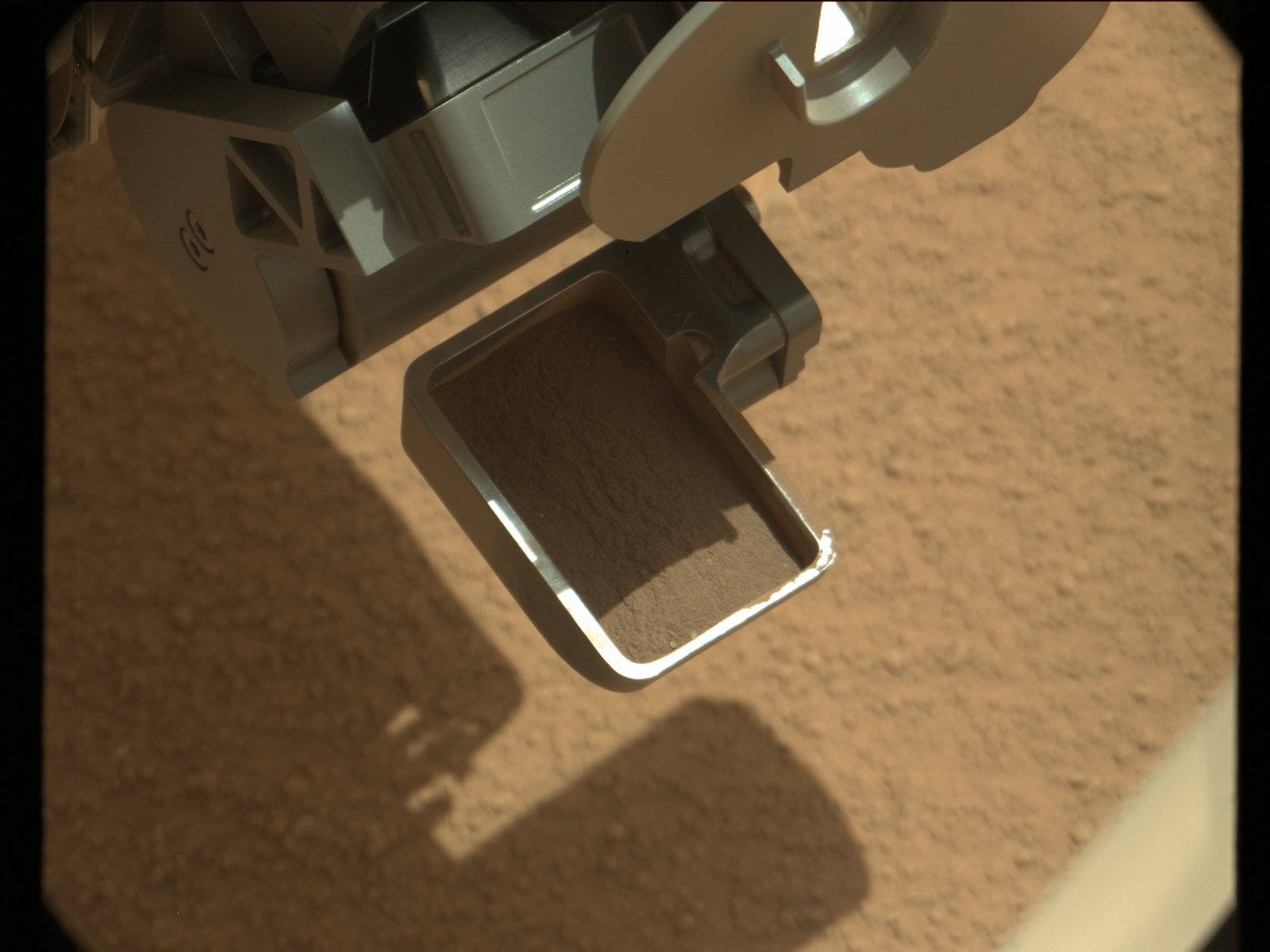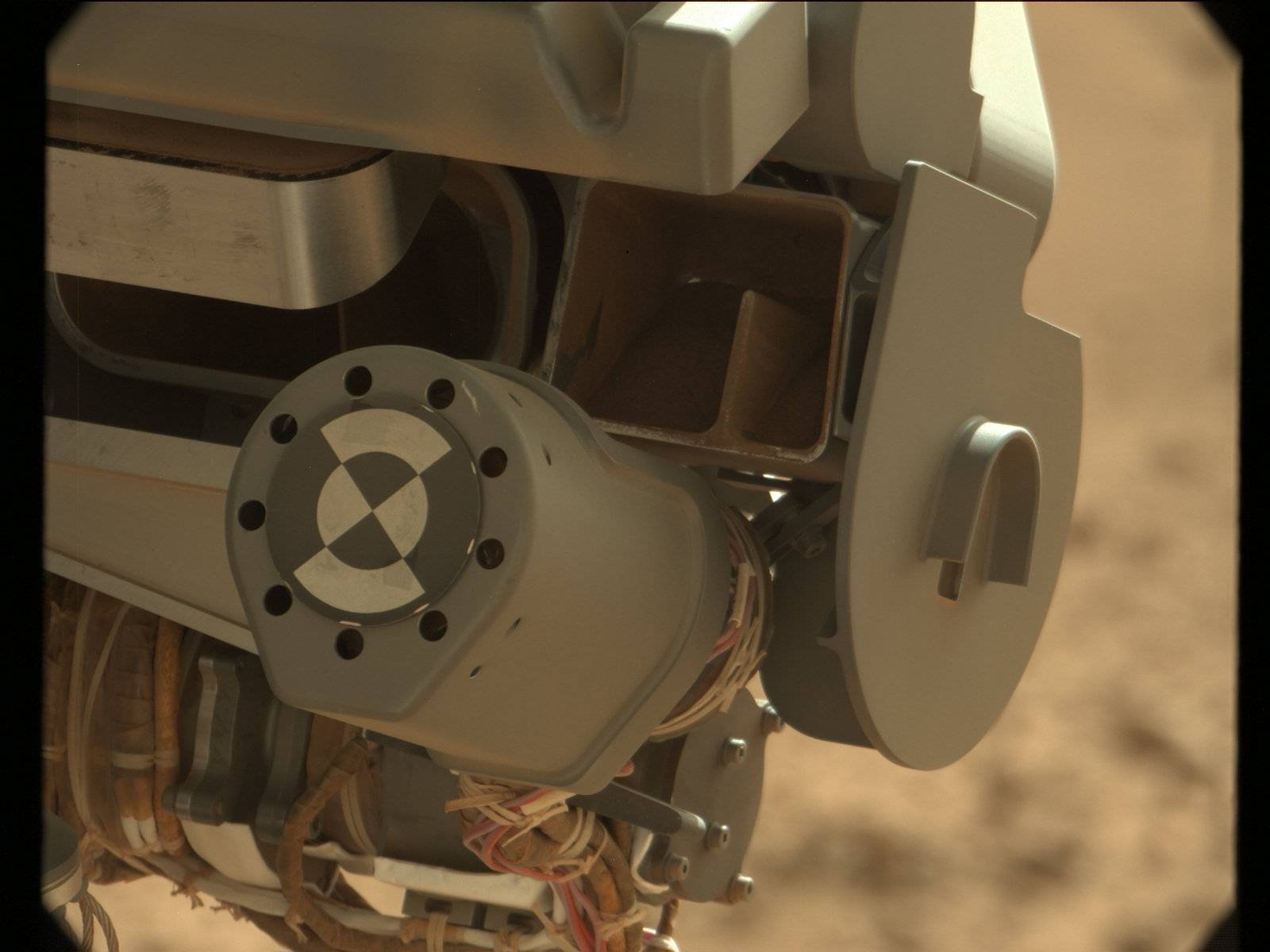As you may (or may not) know, Curiosity is currently engaged in a test campaign of its scoop which was halted for a few sols out of because a certain shiny object that sits in front of the rover's current position besides the sand drift at 'Rocknest'. The material, according to the rover team, may have originated from when the rover descended from the starry heavens onto the Martian surface back in August. A lot of stuff sort of fell off the descent stages, parachute, et cetera. And the rover just happened to chance upon one of these 'flakes'. So no worries there!
 |
| MAHLI true colour image of the object, sol 65 (NASA/JPL/MSSS) |
dumped. Subsequent imaging of the tool's interior, which can be opened, showed it to be nice and dirty!
 |
| Step 1: Scoop, sol 61 (NASA/JPL/MSSS) |
 |
| Step 2: Sieve and inspect, sol 64 (NASA/JPL/MSSS) |
 |
| Step 4: Dump the reject, sol 65 (NASA/JPL/MSSS) |
| Sol 66 navigation camera image showing the two scooping sites; the lower one is new. (NASA/JPL) |
Meanwhile there was a talk given in Thursday's telecon about the mission's scientific results regarding the rock dubbed Jake Matijevic that was checked out about 2 weeks ago by the rover's many instruments. This one was about data from Curiosity's ChemCam and APXS instruments. Both measure chemical compositions and both had interesting stories to tell. It was a full blown petrology (study of rocks) class! But being a doctor, I am supposed to brave the complex so a bit of research was in order at the time.
ChemCam, if you remeber, shots laser at targets to create hot plasma which is measured by an imaging system to report its spectra i.e. composition based on wavelengths of light emitted. ChemCam's laser is well focused, capable of 30 shots on a spot at the level of tens of microns across. 14 spots were measured with the first 5 shots being discarded as they are spectra of the dust covering the rock which isn't what they want. This is done to allow averaging of the readings as 1 spot will only show readings of a few crystals in the rock's matrix of many crystals of different compositions. APXS doesn't need to do that (it took only 2 readings of Jake each lasting about 1hr all in the night) as its aperture is big enough (penny-sized) to average out the target it examines.
Both instruments found that Jake is enriched in elements called 'alkaline metals', things like sodium, potassium and calcium as well as in elements like aluminium, zinc and bromine (bromine, chlorine and sulphur were all detected, signifying dust on the target, Curiosity's APXS target, a piece of basalt, lacks all of these when measured clean). So all these mean what? Jake is definitely an igneous rock as suspected originally but its composition reflects a rock type that hasn't been seen on Mars but is abundant on Earth. The minerals suspected are feldspar (potassium, calcium and sodium rich silicate) and ilmenite (iron and titanium oxide) and they occur in rocks referred to as 'alkalic' rocks. These rocks are thought to be derived on Earth from cooled magma that was derived from the partial melting of rocks in the mantle. The cooling magma (through a complex and poorly known process) concentrates alkaline elements in these rocks which may also have rare alkaline earth elements like lithium which we need for our batteries (the word rare indicates that its quite rare to find rich deposits of these elements for mining). NASA's press release mentions that the magma is usually water-rich on Earth. But it may be unrealistic to extrapolate this Earthly process to Mars.
So that's it folks. Hope I didn't send you to sleep with that one! It is now currently sol 68, 4am in the morning at Curiosity's site. Stay tuned! If you would like to read more on 'alkalic' rocks and their importance on Earth (they are VERY important to us) go here.

No comments:
Post a Comment